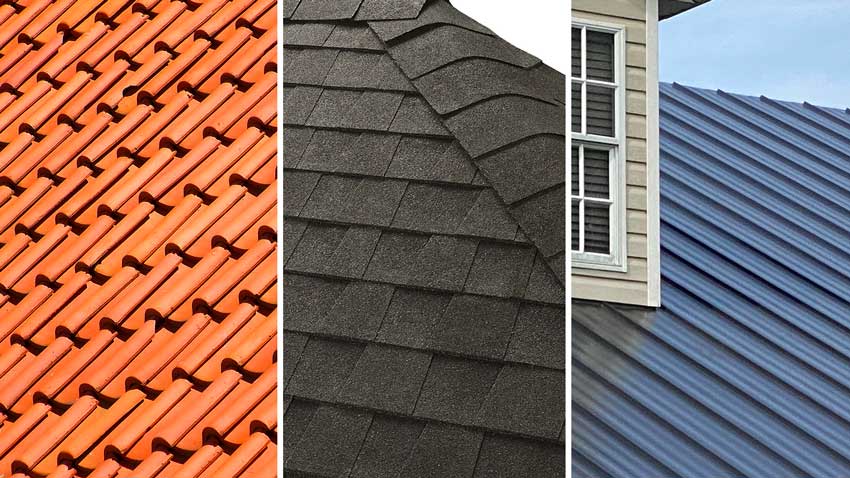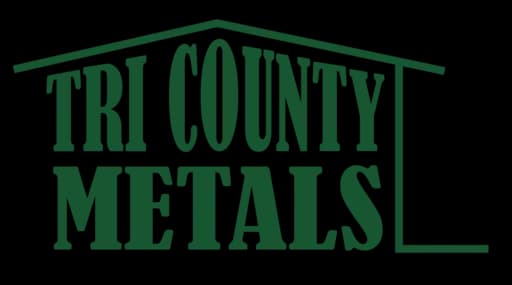Different Roof Types and Their Lifespans: A Complete Guide for Sarasota Homes
Looking to install a new roof? Hoping to install a material that will last the long haul? If so, you’re in the right place. Below, we’re going to review the lifespans of different roof types, helping you choose the material that’s right for you. Let’s get into the specifics, shall we?
3-Tab Asphalt Shingle Roofs
The most common of the different roof types for residential homes, 3-tab asphalt shingles are known for their low cost, ease of installation, and low-maintenance upkeep. Available in a variety of colors, they fit in with homes of all shapes and styles.
Take the first step
Schedule a fast, no-pressure visit. Since 1987 we’ve got you covered.
Get startedHowever, when it comes to durability, 3-tab shingles are limited. Generally, regardless of maintenance, they last around 15 years before becoming warped or curled by Florida’s rain and sunshine.
Architectural Asphalt Shingle Roofs
Architectural asphalt shingles are a step up from 3-tab shingles, offering better construction and a more dimensional aesthetic. They’re also available in more styles and colors.
These shingles last around 20–30 years and are made from a combination of fiberglass, ceramic, and asphalt. They’re built to withstand Florida’s sun and seasonal storms more effectively than their 3-tab counterparts.
Wood Shingle Roofs
Wood shingles, typically made from cedar or pine, offer a charming, rustic look. However, they come with higher installation costs, maintenance demands, and vulnerability to fire, moisture, and pests.
Even with maintenance, wood shingles typically last only 25–30 years. If you’re committed to the aesthetic and willing to invest in upkeep, they can make a beautiful addition to your home.
Wood Shake Roofs
Wood shakes are a thicker, hand-split version of shingles that offer a more rugged, layered appearance. They’re often used in custom or upscale homes for a natural look.
Wood shakes can last around 40 years with consistent upkeep, but they are significantly more expensive—often 1.5x the cost of wood shingles.
Metal Panel Roofs
Metal roofs are increasingly popular in Southwest Florida due to their durability, fire resistance, and reflective qualities that improve energy efficiency. While initially more expensive, they typically last between 50 to 75 years with minimal upkeep.
Regular maintenance includes checking for rust and removing debris. Thanks to their long life and low maintenance, metal roofs are one of the most cost-effective options over time.
Tile Roofs
Clay and concrete tiles are low-maintenance, energy-efficient, and built to last well over 100 years. They’re especially popular in Mediterranean and Spanish-style homes in Florida.
However, tile is heavy and must be installed by seasoned roofing professionals. The underlayment is critical—if you use cheap materials underneath, the lifespan of your tile roof may be compromised.
Slate Roofs
Slate roofs are the most durable option available, lasting over 150 years in many cases. They’re made from natural stone and require very little maintenance after installation.
Due to the high cost ($50–$75 per square foot), slate is most commonly seen on luxury homes. Still, if you can afford the upfront investment, the longevity and minimal maintenance make slate a standout option.
Choosing the Best Roof Type for Your Home
Every roofing material comes with trade-offs between cost, appearance, and durability. Your ideal roof depends on your long-term goals, aesthetic preferences, and budget.
If you’re unsure what’s best for your Sarasota property, we can help. From roof maintenance to full roof replacement, we’ve installed every roof type listed above.
We also offer advice on underlayment materials, energy efficiency, and weather resistance—especially important in hurricane-prone Southwest Florida.
Contact Sarasota’s Roofing Experts
SonShine Roofing proudly serves homeowners across Sarasota, Manatee, and Charlotte counties. Whether you’re comparing roof lifespans or ready to start a replacement, we’re here to help.
Contact us today to request a consultation and get your roofing questions answered by local experts who care.















